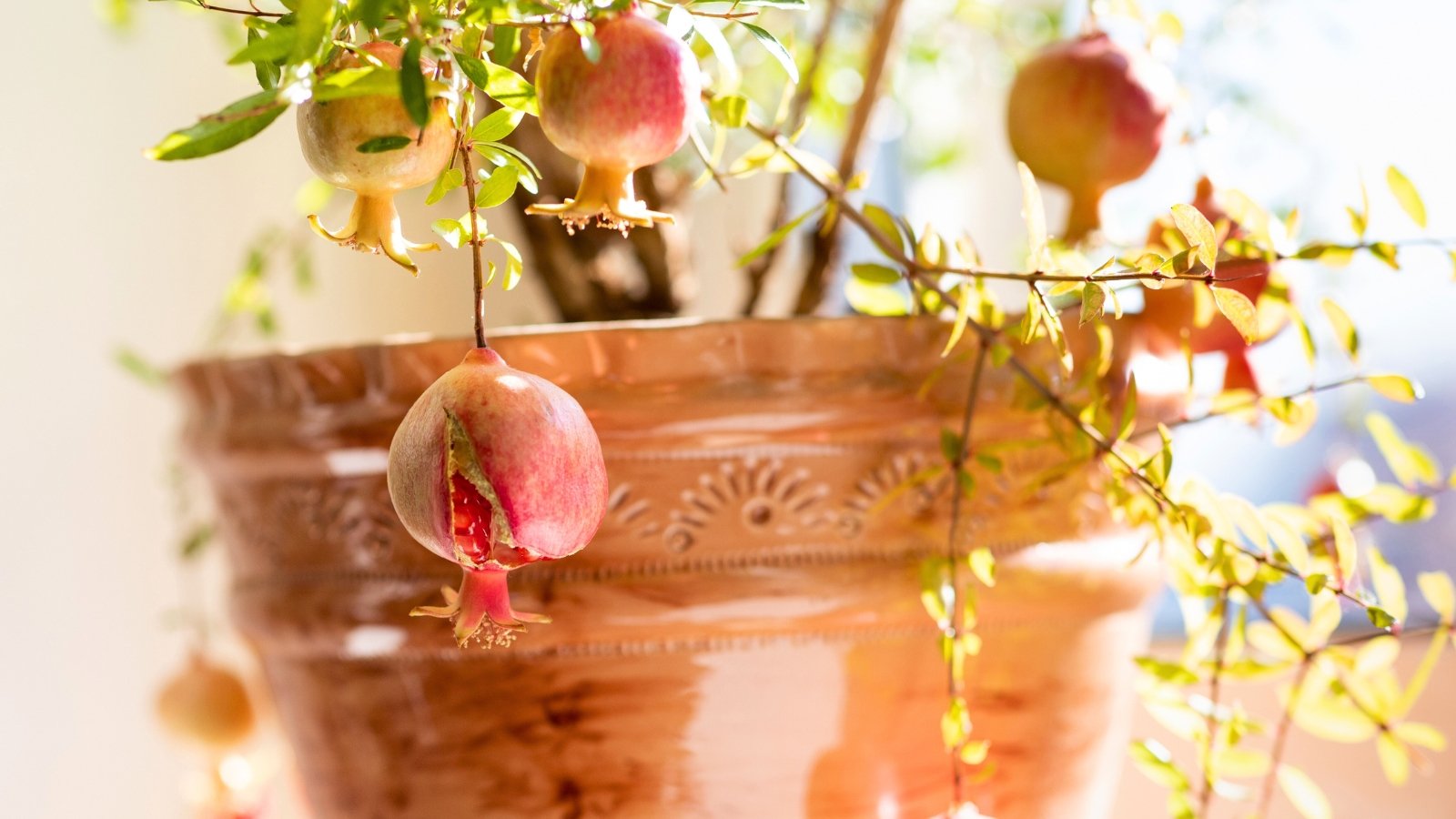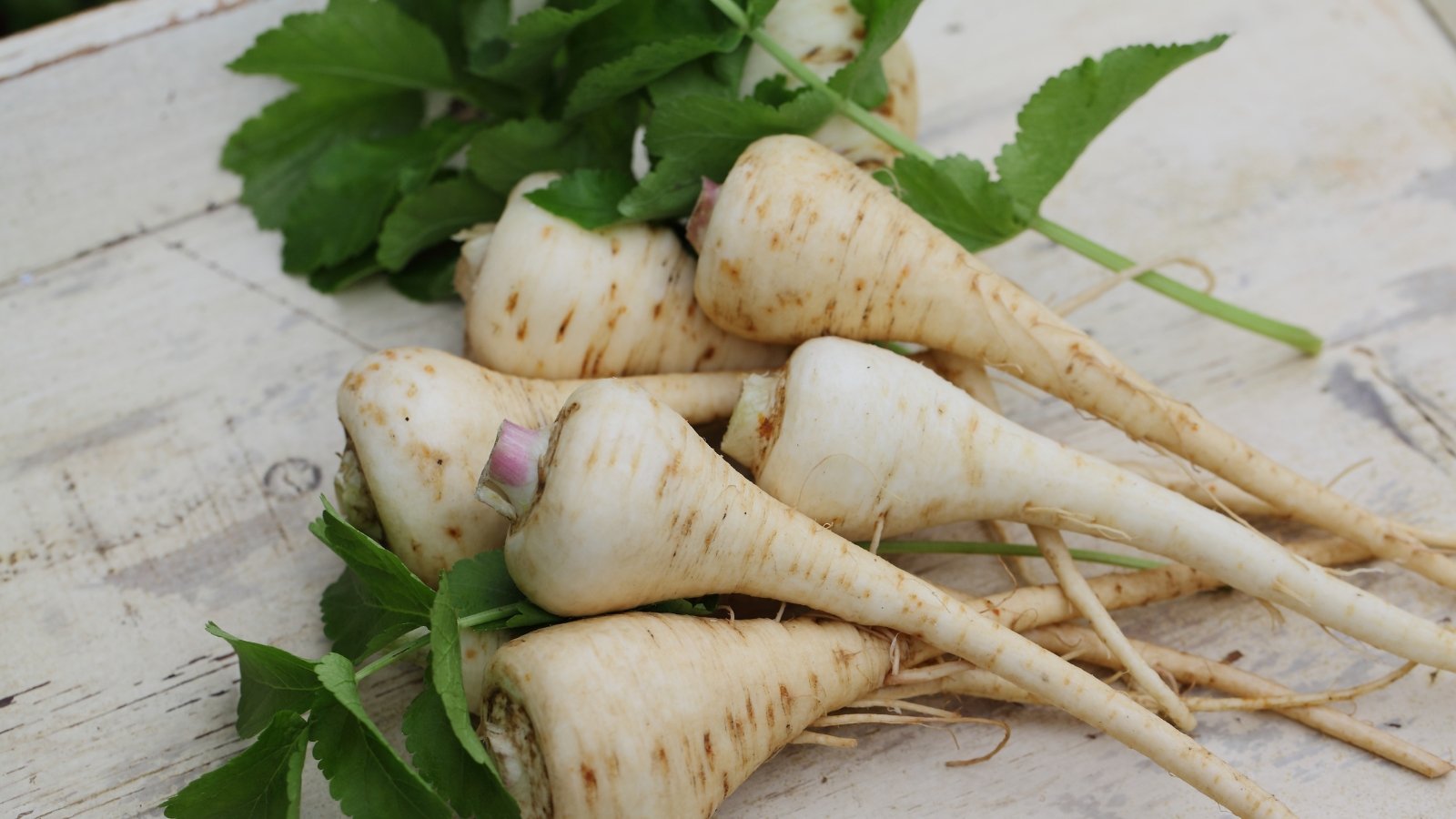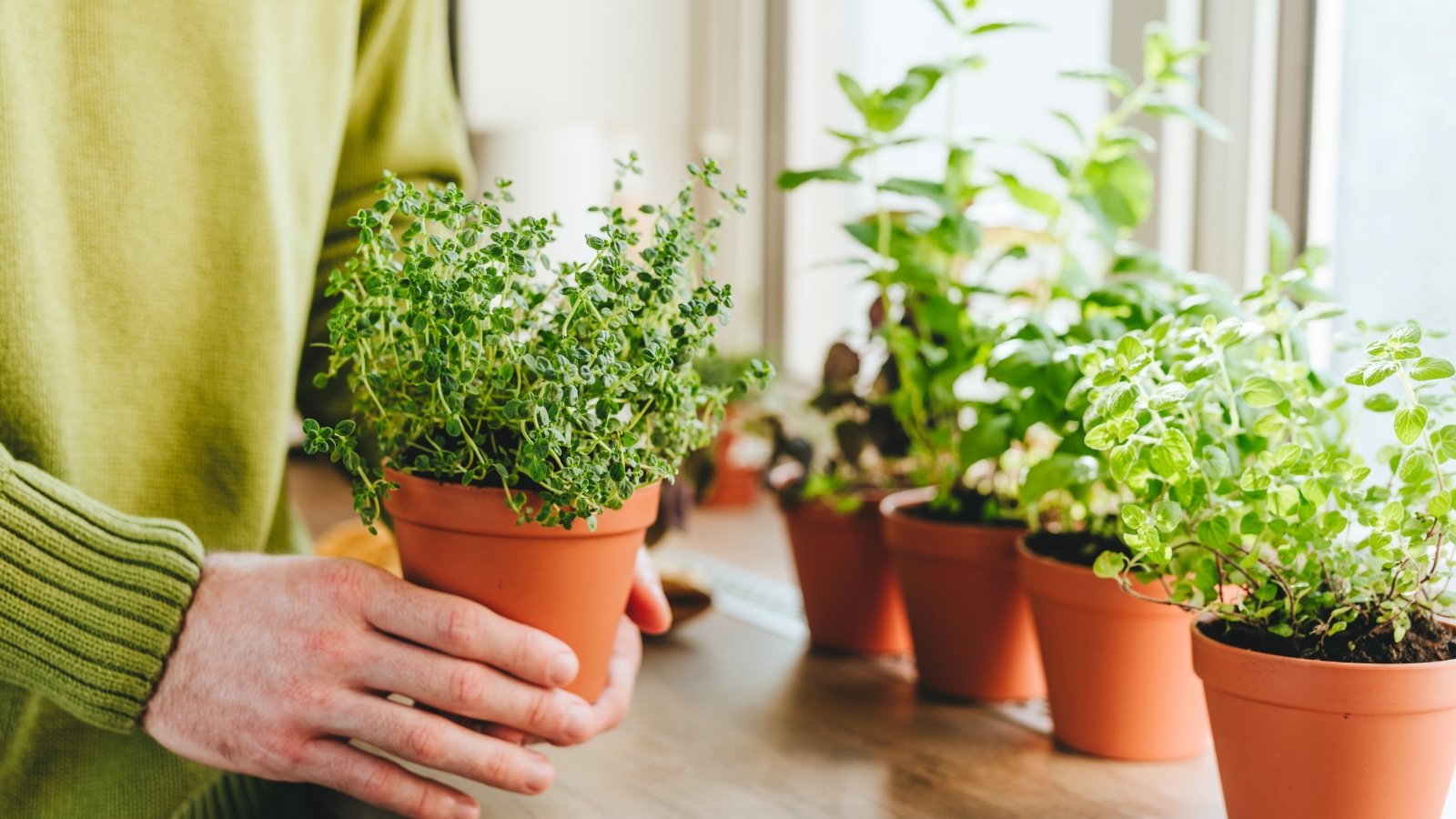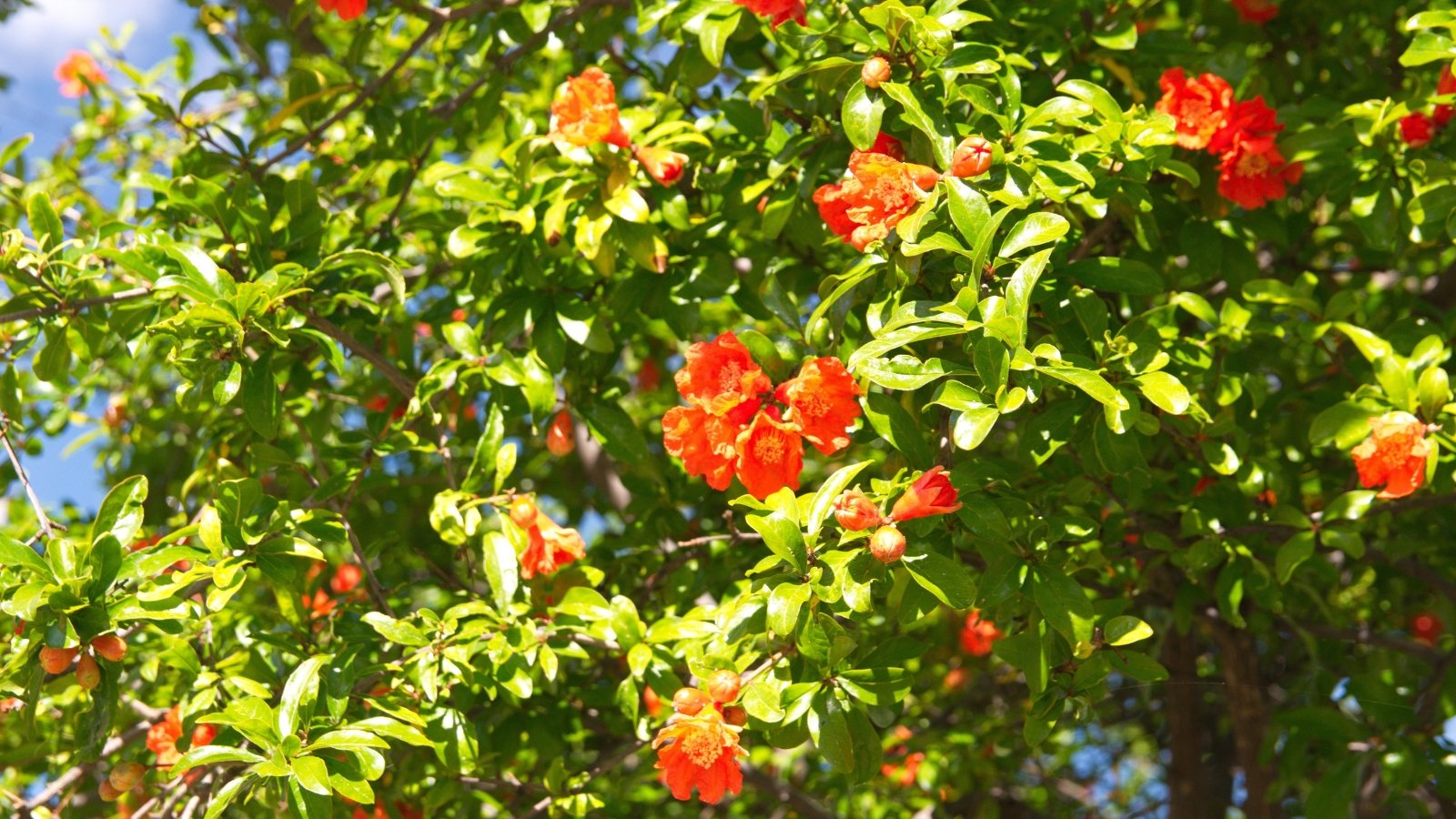
7 Causes There’s No Fruit on Your Pomegranate Tree
[ad_1]
Whilst you take into account yard orchards, apples, peaches, or blueberries might come to ideas. Nevertheless are you aware you can effectively develop pomegranate bushes outdoors in zones 8 and above? With the suitable care and endurance, you can benefit from homegrown variations of these distinctive, juicy fruits.
However, pomegranate bushes don’t always bear fruit. They might produce flowers that drop sooner than setting fruit, or they may not flower the least bit. Each method, dealing with an absence of pomergranates can be irritating.
It’s helpful to take a look at some frequent the reason why your pomegranate tree isn’t producing. After learning by the guidelines, you can determine if any of the reasons apply to your state of affairs. To get you started, I’ll introduce seven potential causes for an absence of fruit and provide choices to help restore the problem.
Tree Is Too Youthful
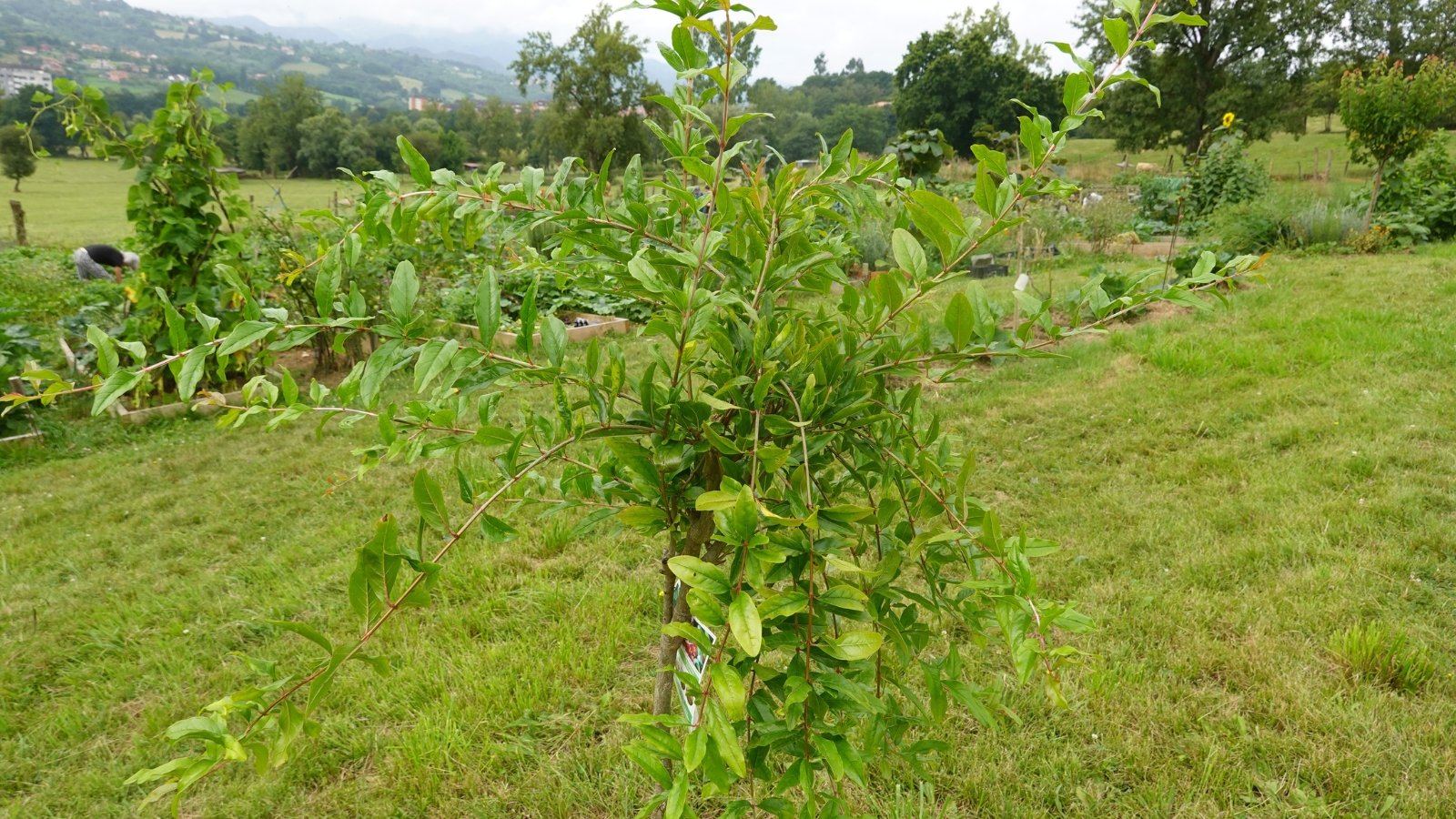

Since pomegranate bushes develop as woody perennials, they don’t produce flowers of their first yr of improvement. Instead, they spend their vitality rising a powerful root system and forming lush foliage. After just some years of enchancment, the vegetation can begin exerting vitality on flower and fruit manufacturing.
In case your tree is youthful and seems healthful no matter an absence of pomergranates, it’s potential too immature to flower. Most pomegranate bushes will begin producing free throughout the second or third yr after planting. Fairly just a few components impression when a tree begins flowering; the tree’s measurement at planting, the native climate, daylight, and water present all impression when flowers kind.
You will need to additionally keep in mind that bushes will produce a small amount of flowers and fruit of their first yr of producing. While you solely spot a handful of flowers, don’t fret! The bushes will produce further flowers and fruit as they mature. However, in case your plant isn’t producing by yr 5, there’s potential one different set off accountable.
Not Ample Light
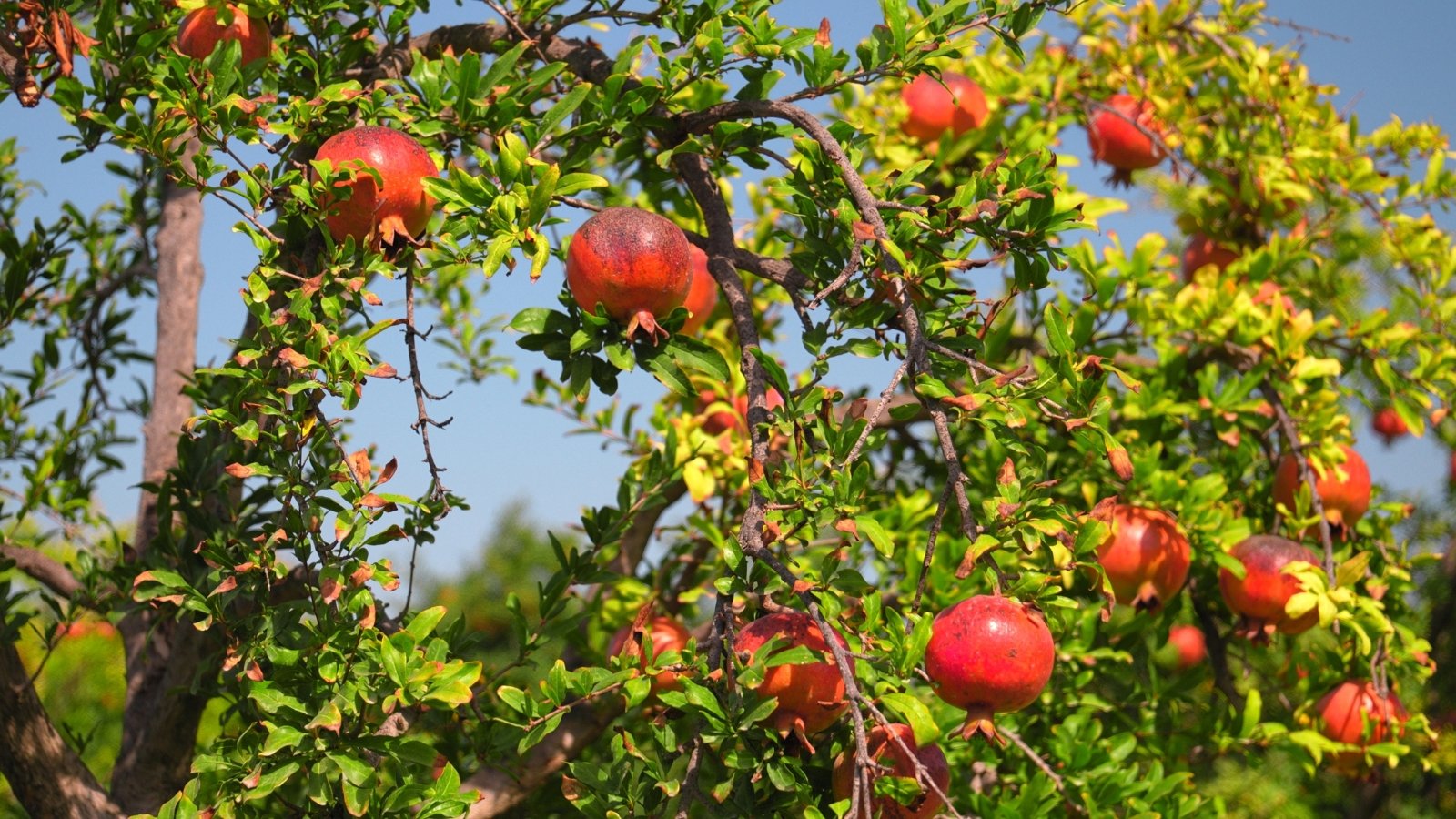

Pomegranate bushes thrive in full photo voltaic. They are going to tolerate just some hours of morning or afternoon shade nonetheless require not lower than eight hours of direct mild to remain healthful. An absence of sunshine may end up in stunted improvement, elevated susceptibility to sickness, leggy vegetation, and/or an absence of flowers.
In case your plant continues to be youthful and likewise you’ve realized you planted it in an area that is too shady, you can dig up the plant and switch it to a further applicable location. The perfect time to transplant is the late winter or early spring—it is advisable to goal for the time merely sooner than bud break occurs.
This time is correct for two causes. First, the tree will probably be a lot much less susceptible to emphasise for many who dig it up whereas it’s dormant, and the spring warmth will encourage the tree to settle into its new home.
When looking for an applicable location, analysis the sunshine at fully totally different situations of the yr. As a result of the photo voltaic’s angle modifications all yr lengthy, an area might get hold of solely an hour of shade within the summertime nonetheless six hours throughout the winter. The perfect location is normally an open area free of obstructions or the south-facing side of a home or developing.
Not Ample Water
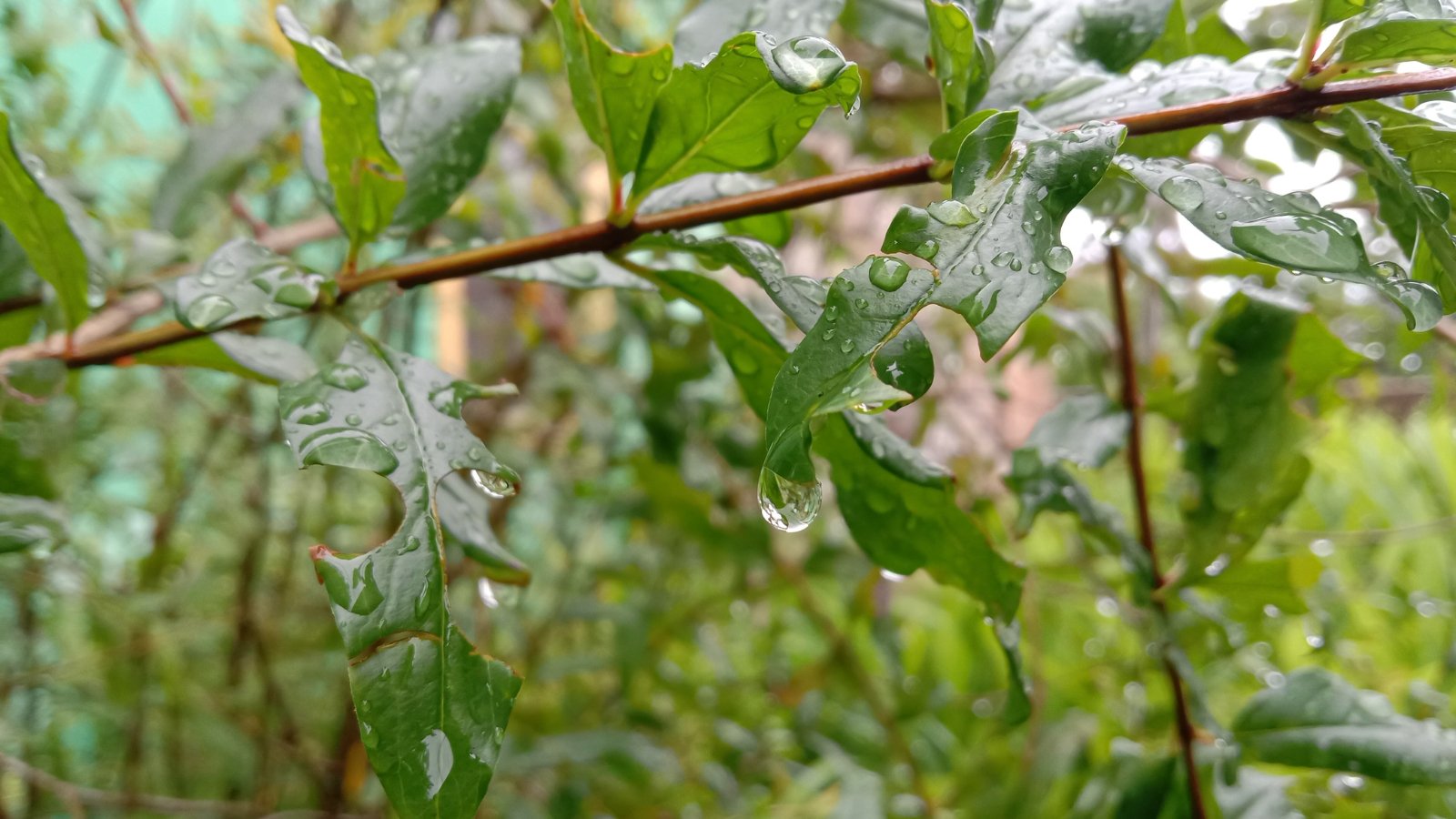

Although pomegranates are acknowledged for his or her drought tolerance, they nonetheless require frequent irrigation to thrive. An ample moisture present may be very very important throughout the first few years of a tree’s improvement and thru the months of fruit enchancment.
Since pomegranates produce flowers throughout the spring and ripe fruits throughout the fall, it is advisable to pay specific consideration to summer season irrigation. Scorching, dry local weather can shortly set off drought stress, which can lead to flower drop or inhibit pomergranate enchancment.
When pomegranates lack water, they shut their stomata (leaf pores) to protect moisture. The closed pores maintain water throughout the vegetation, nonetheless the vegetation moreover experience trouble cooling themselves.
Researchers have found that pomegranate bushes exhibit decreased vegetative improvement and fruit yields when water availability falls beneath the proper stage. While you underwater the bushes for various years, the implications can compound and lead to weak bushes with poor canopies.
So, how usually should you water your vegetation to take care of them healthful? Consultants on the School of Florida advocate irrigating deeply about as quickly as per week when conditions are dry. It’s very important to take care of your irrigation schedule as fixed as potential all by means of the rising season. A sudden enhance in water after a dry spell can lead fruits to separate open.
You might water the bushes by hand with a watering can or hose. However, placing in drip irrigation in your bushes might make it less complicated to water. You may even set the drip system on a timer to verify your plant receives a relentless present of water.
Too So much Water
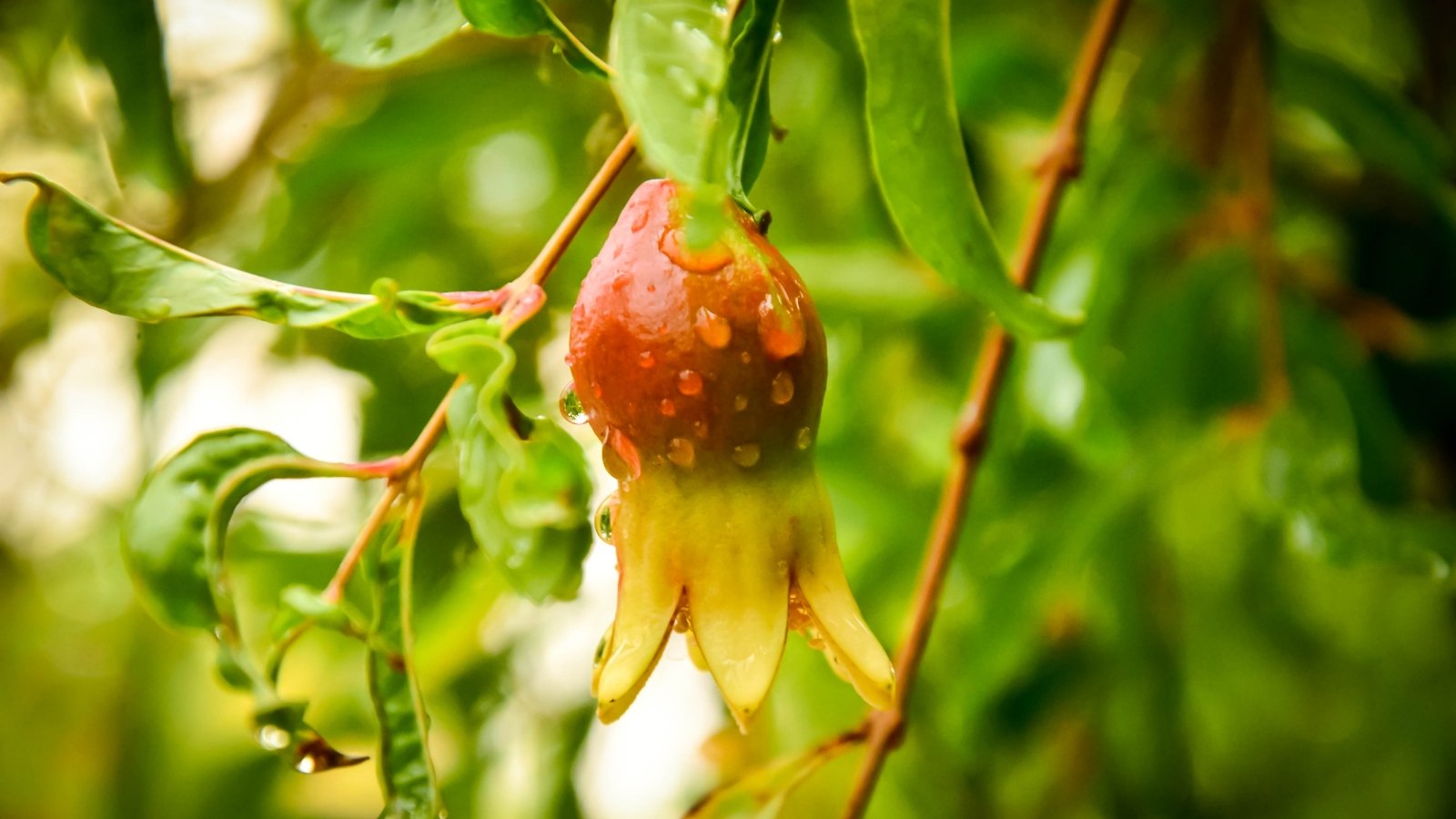

Like all vegetation, pomegranate bushes need water to thrive. However, an extreme quantity of water might trigger merely as so much stress as not ample. This stress may end up in points with flower manufacturing, fruit set, and maturation, all of which can lead to an absence of pomegranates.
So, how so much water is an extreme quantity of? rule of thumb is to water your vegetation deeply not lower than as quickly as per week by means of the primary rising season. If it rains sufficiently, you can skip your weekly watering. You may even decrease irrigation throughout the late fall by early spring; all through this time, you solely should water if the soil is dry.
Along with noting how usually you water, you could additionally check out the soil and drainage. Pomegranates can develop in soil extreme in clay and sand, along with one thing in between. However, the bushes require sufficient soil drainage to remain healthful. While you uncover that water is forming puddles, it is advisable to work to boost the drainage.
Sadly, bettering soil drainage is hard after your pomegranate is throughout the ground. However, you can alter the soil sooner than planting. Aerating the underside with a digging fork or broadfork will improve drainage. You may even mix in compost to raise the extent of soil pure matter and improve compacted soils.
Poor Pollination
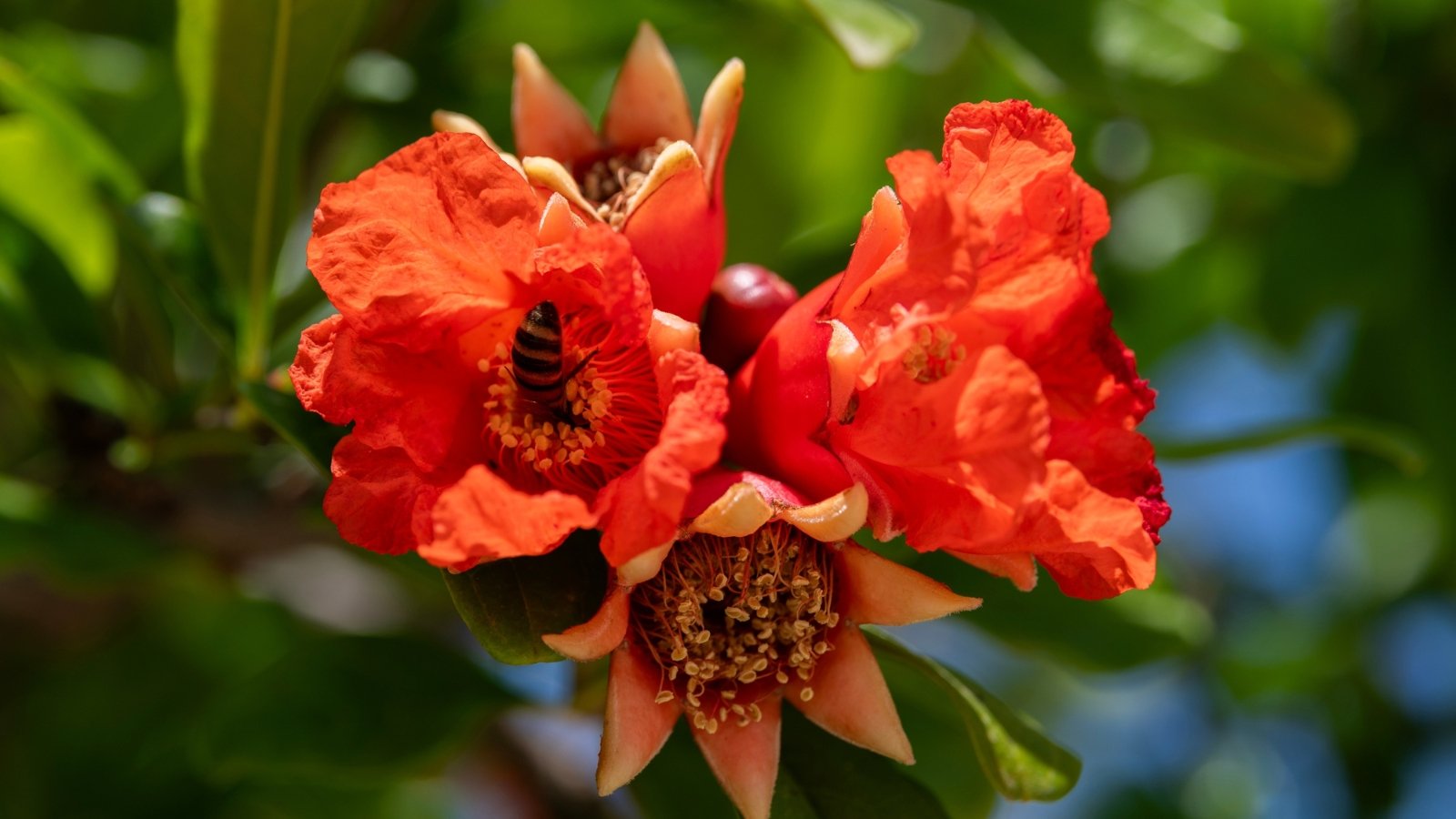

In case your pomegranate plant produces a great deal of flowers nonetheless no fruit, it might probably be a sign of improper pollination. Pomegranate flowers are typically self-pollinated, which suggests the female elements of a flower get hold of pollen from the an identical flower. However, cross-pollination moreover usually occurs in pomegranates. Considered one of these pollination occurs when pollinators like hummingbirds or bees swap pollen from one flower to a distinct.
Although cross-pollination isn’t necessary, it does enhance yield. As a consequence of this truth, an absence of pollinators may end up in restricted pomergranate manufacturing.
One method to enhance cross-pollination is to convey further pollinators to your yard. Providing a water provide, rising quite a few flowering vegetation, and avoiding broad-spectrum pesticides will all encourage pollinators to go to your yard. Planting native vegetation might even current habitat and meals for useful pollinators like butterflies and bees.
While you’re decided, you can hand pollinate your pomegranate flowers. This contains using a small paintbrush to change the pollen from one flower’s stamens to a distinct’s stigma. Whereas this will likely often sound tough, it merely contains gently swirling the paintbrush in the midst of one open flower after which ending the an identical course of on one different flower.
Improper Pruning
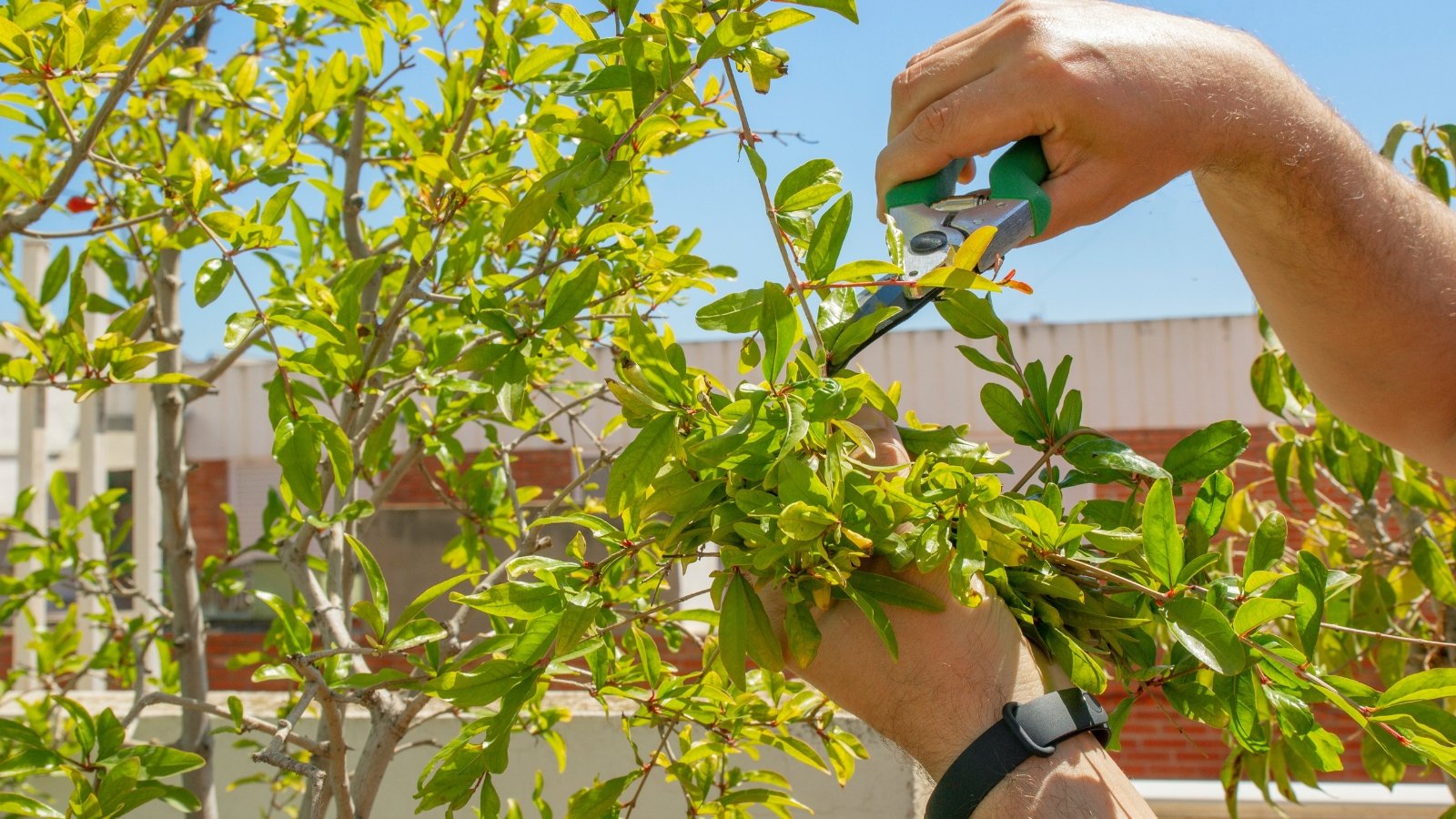

Usually, pomegranates don’t require heavy pruning. Eradicating ineffective and crossing branches is all the vegetation wish to keep healthful. However, you might as nicely prune your pomegranate to encourage it to develop as a trailing shrub or upright tree.
It does not matter what sort of pruning you undertake, stay away from eradicating an extreme quantity of wood directly. Not solely will aggressive pruning stress the plant, nonetheless it might nicely moreover take away fruiting wood.
Pomegranates kind flowers and fruit on second-year wood, so eradicating an extreme quantity of woody improvement can take away all second-year wood. While you try this, you’ll end up with no flowers and fruit!
You’re Rising a Flowering Pomegranate
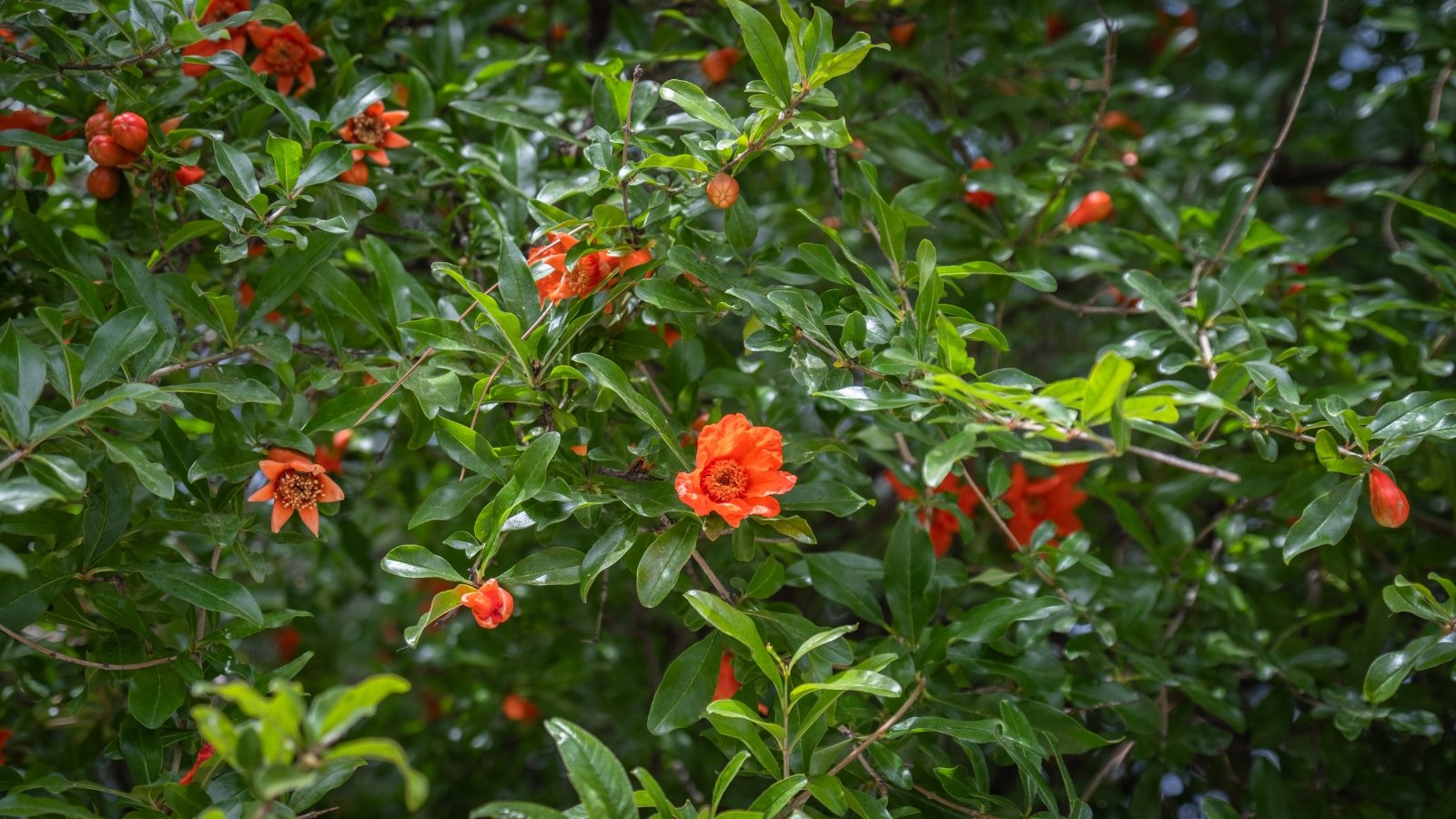

While you’re fascinated about together with a pomegranate to your yard, attempt to be aware there are two foremost kinds: fruiting and flowering. Whereas every kinds will produce big, pretty flowers, the flowering varieties will not produce fruits. As a consequence of this truth, don’t merely seize a pomegranate plant from a nursery and anticipate it to fruit.
For those who want to benefit from pomegranate fruits, it’s best to select a time-testing fruiting choice. ‘Improbable’ and ‘Texas Pink’ every produce delicious purple fruits filled with juicy arils. You might anticipate to begin harvesting the fruit two to three years after planting.
[ad_2]
Provide hyperlink
